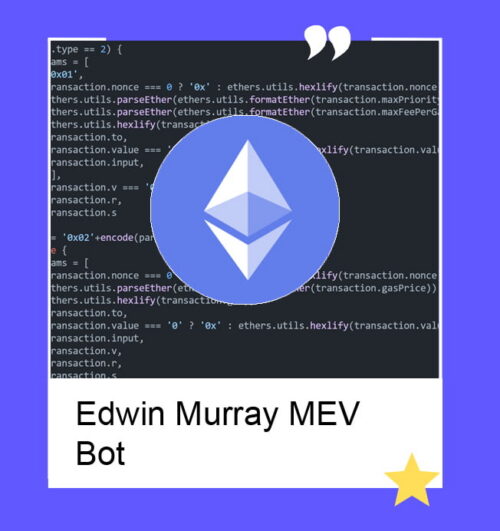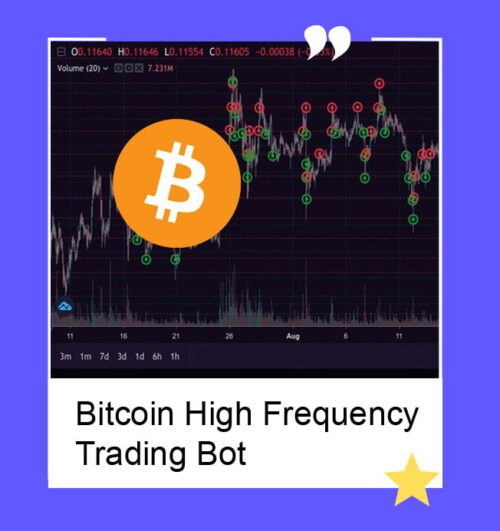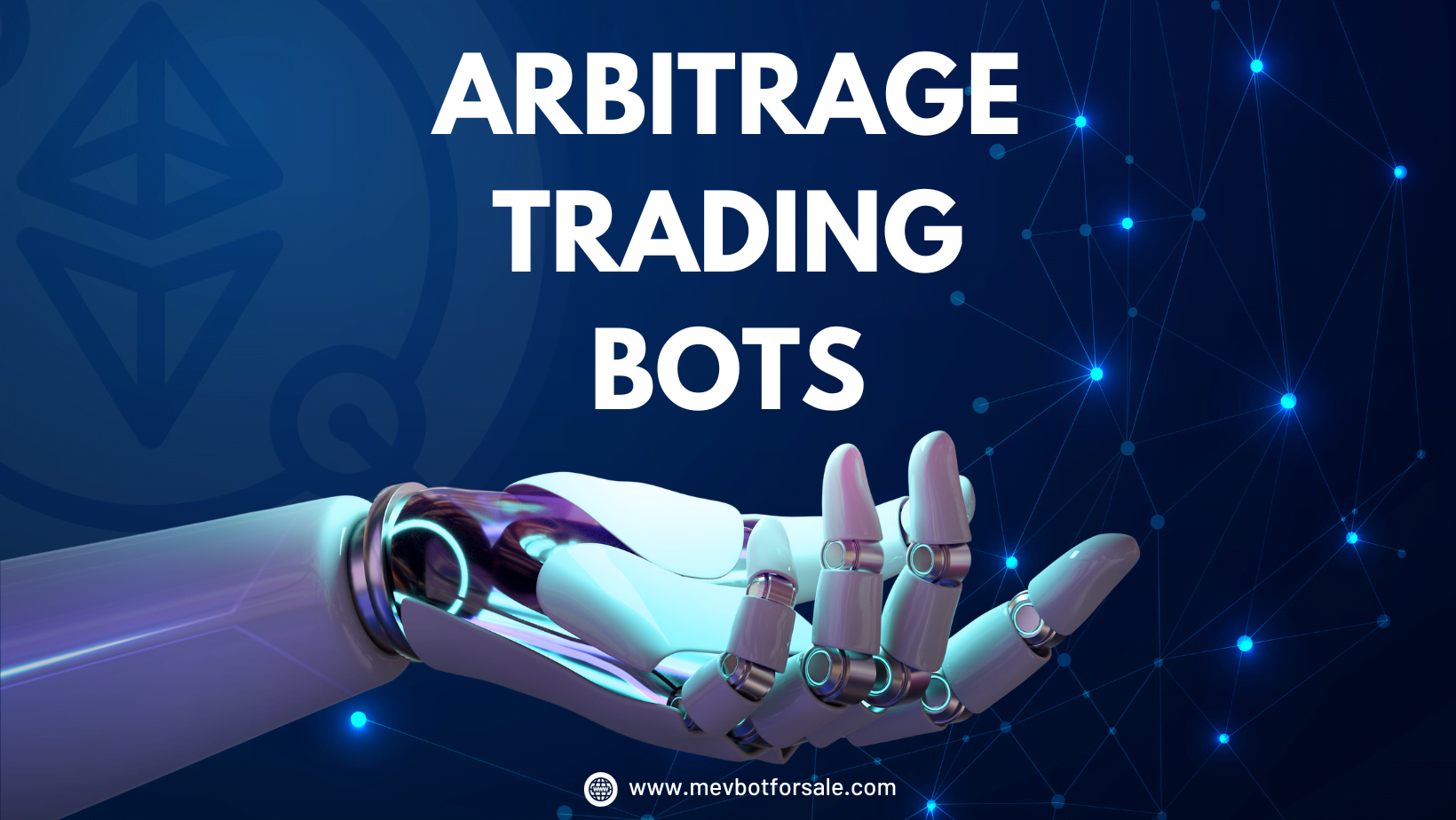table of contents
A Beginner’s Guide to Arbitrage Trading Bots and Automated Trading
The crypto market never sleeps, fluctuating at a pace unlike any traditional exchange. Have you ever wondered about capitalizing on these fluctuations?
Arbitrage trading bots can be ideal for those seeking profit from the ever-volatile cryptocurrency landscape. By automating the process, traders might tap into a seamless, though complex, way of executing trades that could yield gains from the price discrepancies across different markets. However, delving into this high-speed world requires a nimble strategy and an understanding of the sophisticated technology that drives such systems and the risks involved.
Understanding Arbitrage Trading
Arbitrage trading exploits price differences across markets to secure a risk-free profit. Automated bots execute these trades precisely and quickly, capitalizing on fleeting opportunities.
One must monitor multiple exchanges to successfully arbitrate, identifying price disparities often caused by market inefficiencies. Bots streamline this process, acting on variances quicker than humanly possible, maximizing profit margins.
Arbitrage opportunities, termed “riskless profit” and “market-neutral,” are attractive in their promise of predictable returns in the otherwise volatile trading environment.
Core Principles of Arbitrage
Arbitrage exploits market inefficiencies—buying low and selling high—to secure risk-free gains from price discrepancies.
Arbitrage exists due to market imperfections and the inefficiency of information spread, creating opportunities for discerning traders.
Inherently reliant on volatility and differential pricing, arbitrage bots operate under the principle of exploiting these gaps efficiently, quickly, and reliably.
High-frequency trading strategies, including arbitrage, necessitate robust technological infrastructure to manage the volume and speed of data processing, ultimately serving as the backbone of these systems.
Different Arbitrage Trading Strategies
Arbitrage trading is not monolithic but encompasses multiple methodologies with characteristic nuances and risks. Spatial arbitrage and statistical arbitrage are prime examples tailored to exploit specific market conditions and inefficiencies.
In spatial arbitrage, traders capitalize on price differences of a single asset traded on multiple exchanges. A trading bot can simultaneously execute a buy order on one exchange where the asset’s price is lower and a sell order on another exchange where the price is higher. Free of market exposure risk, this approach leverages the innate latency in synchronizing asset prices across platforms. However, it requires maintaining liquidity on multiple exchanges and can be affected by transfer delays and fees.
Statistical arbitrage, on the other hand, involves complex mathematical models. It aims to identify and profit from statistical mispricings of one or more assets. Utilizing the law of large numbers and mean-reversion strategies, this method requires a deep analysis of historical price patterns and sophisticated predictive algorithms. Bots programmed for statistical arbitrage seek out anomalies and execute trades that anticipate the eventual price correction.
Finally, triangular arbitrage exploits discrepancies between three currencies in a foreign exchange market or three assets on a cryptocurrency exchange. It involves sequentially executing trades that capitalize on the currency or asset mispricings. The execution must be swift, as these opportunities are fleeting and renowned for being captured by algorithms far quicker than human traders. Triangular arbitrage demands an intricate understanding of exchange fees, order book depth, and the precise timing of transactions.
Risks and Limitations
Arbitrage trading bots, while powerful, are not infallible systems. They operate within a framework drenched in market and technological risks, which can lead to significant financial setbacks if not appropriately managed.
Market volatility can wreak havoc on arbitrage strategies, as rapid price changes may render an arbitrage opportunity unprofitable before the bot can execute the trade. Additionally, liquidity issues can arise, potentially leaving the bot unable to complete all legs of the trade at the anticipated prices.
Furthermore, competition among arbitrage bots is fierce. The prevalence of high-frequency trading (HFT) firms and other automated systems means that profitable opportunities may be identified and exploited within milliseconds, often before smaller, less sophisticated bots can react.
Technical failures also represent a significant risk; glitches, downtime, or disconnections can cause missed opportunities or incomplete trades. Security is another primary concern; malicious entities continuously target crypto trading platforms and bots, aiming to exploit vulnerabilities.
Lastly, arbitrage bots must be operated within the regulations set forth by governments and exchanges. Non-compliance can result in frozen funds, penalties, or even legal action, irrespective of the bot’s algorithmic sophistication.
The Mechanics of Trading Bots
Arbitrage trading bots are powered by algorithms that enable rapid analysis of price discrepancies across exchanges. These bots are designed to execute trades swiftly to capitalize on these fleeting arbitrage opportunities.
These bots monitor multiple markets at their core, comparing real-time data using predefined criteria. If an opportunity that meets profitability thresholds is detected, including transaction fees, the bot triggers a trade execution sequence. In essence, they seek to automate the split-second decisions necessary in arbitraging.
The success of a trading bot hinges on precision and speed, as price differentials are ephemeral. Robust programming, reliable data feeds, and low-latency execution are indispensable components of a competitive arbitrage trading bot.
How Bots Execute Trades
Arbitrage bots execute trades autonomously, initiating transactions once an opportunity is identified. They operate continuously, tracking price movements and liquidity to ensure timely execution.
A trading bot swiftly executes simultaneous buy and sell orders on different exchanges upon discovering a price discrepancy that exceeds predefined parameters. This process involves complex calculations and decision-making protocols to determine the optimal transactional volume and timing. Advanced bots will factor in exchange fees, transaction times, and potential slippage to ensure profitability.
Instantaneously, these bots place orders through exchange APIs, which are interfaces allowing the bot to interact with the exchange’s trading system. Reliable connectivity and high-speed data transfer are crucial, as lag can erode the arbitrage advantage. The aim is to complete the trade before the price discrepancy resolves itself.
Moreover, trading bots may use sophisticated strategies like flash loans for capital efficiency, engaging in transactions without committing vast amounts of personal funds. They may also implement risk management protocols to minimize potential losses due to sudden market shifts or order book changes. These nuanced approaches require high technical finesse and are bound by the operational rules of each exchange where the bot operates.
Bot Customization 101
Understanding the key features of arbitrage trading bots is essential to harness automation effectively.
- Strategy Selection: Tailor the bot’s trading strategy to fit your risk tolerance and target markets.
- Risk Parameters: Set limits on trade size, daily volume, and drawdown to protect your capital.
- Execution Algorithms: Choose from various execution methods to optimize trade timing and minimize slippage.
- Notification Settings: Configure alerts to stay informed about the bot’s activity and significant market events.
- API Configuration: Accurately set up API keys and permissions for secure and efficient exchange communication.
Each parameter can profoundly influence the bot’s performance and must be adjusted carefully.
Regular fine-tuning ensures your bot remains aligned with the ever-evolving crypto market dynamics.
Setting Up Your First Bot
Embarking on your first foray into automated arbitrage trading begins with selecting a reliable bot that accommodates your preferred exchanges and trading pairs. Ensure that the bot’s technology is compatible with the intricacies of the cryptocurrency markets you wish to target. Once your selection is made, the initial setup involves configuring your API keys. These keys must be guarded with utmost security, as they provide your bot with the necessary permissions to execute trades on your behalf within your exchange accounts.
After securing your API keys, the next step is customizing your bot’s strategy. This customization process requires careful selection of the pairs to trade and identification of thresholds for transaction sizes, ensuring they are congruent with your risk appetite. Furthermore, you must specify the bot’s arbitrage approach—spatial, statistical, or triangular arbitrage—and calibrate it to optimize for the latency and liquidity conditions of the markets you’re engaging in. Review any backtesting results, which can provide valuable insights into potential bot performance, and use these to refine your configurations. Remember, successful arbitrage execution hinges on both the speed and precision of your bot’s operational parameters.
Essential Tools and Platforms
Selecting the appropriate tools and platforms is crucial for the efficient launch of an arbitrage trading bot.
- Cryptocurrency Exchanges: You’ll need accounts at multiple crypto exchanges with various price discrepancies to perform arbitrage.
- API Keys: Your bot must interact with your exchange accounts securely; handle these carefully.
- Arbitrage Bot Software: Choose a reputable bot service or software that supports your chosen arbitrage strategy.
- VPS (Virtual Private Server): Ensures your bot runs 24/7 with minimal downtime and optimal connectivity.
- Backtesting Tools: Before going live, use these tools to simulate strategies using historical data to gauge potential effectiveness.
After procuring the necessary tools, the intricate process of bot configuration begins.
Properly aligning your arbitrage bot with the market dynamics is indispensable to capitalize on fleeting arbitrage opportunities.
Building vs. Buying: A Comparison
Embarking on the arbitrage bot journey requires a crucial decision: to build your bot or purchase a pre-made solution.
When building a bot, one must possess a strong grasp of trading principles and proficient coding skills. The construction process demands substantial time and effort, but it offers the flexibility to tailor features to specific needs. Conversely, buying a bot is convenient, often with customer support and immediate deployment capabilities. These pre-built solutions, however, may need more customization, and ongoing fees can accumulate over time.
Developing a bespoke bot presents the allure of ownership and customization. For traders with coding expertise, this path allows for creating a unique tool designed to their precise arbitrage strategies. It dispenses with dependency on external services and their associated costs, but it requires a substantial upfront investment in time and potentially in specialized development resources.
Conversely, off-the-shelf bots provide a swift entry into arbitrage trading. They are equipped to perform out of the box and are maintained by a dedicated provider, sparing the user from technical headaches. However, reliance on external vendors means less control over the bot’s operations and potentially shared arbitrage opportunities. This can reduce profitability in highly competitive markets, reflecting trade-offs between convenience and autonomy.
Maximizing Bot Performance
Understanding market dynamics is vital in optimizing arbitrage trading bots’ efficiency. Regularly updating the bot with the latest market trends and exchange APIs ensures a quicker response to arbitrage opportunities. Customizing risk management parameters—such as trade sizes and stop-loss orders—is essential to align with current volatility levels. Enhancing the decision-making algorithm with machine learning can facilitate more innovative, faster arbitrage that outpaces manual trading. The bot can navigate market complexities with improved precision and profitability by fine-tuning these aspects.
Monitoring and Adjusting Strategies
Arbitrage trading bots require vigilant oversight to maintain efficacy. Real-time performance monitoring serves as a feedback loop for traders to evaluate the bot’s success rate. If the performance metrics are not aligned with expectations, it’s time to delve deeper and identify potential areas for adjustment.
Over time, market conditions evolve, necessitating strategy recalibration. Factors such as exchange fees, slippage, and the relative liquidity on different platforms could shift, making it imperative for traders to update bot parameters accordingly. Analyzing the bot’s transaction history for patterns may reveal insights that streamline future operations, effectively boosting arbitrage success rates.
Effective bot management also entails adjusting for market sentiment and news. Sudden regulatory changes or impactful global events can significantly alter market landscapes. In such scenarios, responsive modifications to the bot’s logic can avert unnecessary losses and exploit emerging opportunities made visible by market turbulence.
Lastly, sustainable arbitrage success is founded upon rigorous strategy testing and iterative improvements. Periodic simulations of trading strategies under various market conditions can unearth hidden flaws or optimization avenues. Fostering a cycle of continuous development and refinement ensures that your arbitrage trading bot remains resilient and capable of capitalizing on the fleeting windows of opportunity in the dynamic crypto markets.
Advanced Tips for Long-Term Success
Consider incorporating machine learning algorithms to enable your arbitrage trading bot to adapt over time, responding autonomously to shifting market dynamics and enhancing decision-making processes.
Get an Arbitrage Trading Bot
Here are some different types of Arbitrage trading bots to check out.
-
 Edwin Murray MEV BOT Pro$35,000/0.33935713
Edwin Murray MEV BOT Pro$35,000/0.33935713 -
 Bitcoin high frequency trading bot$7,900/0.07659775
Bitcoin high frequency trading bot$7,900/0.07659775 -
 Uniswap V2-V3 Bot$3,900/0.03781408
Uniswap V2-V3 Bot$3,900/0.03781408 -
 Sandwich Attack Bot$8,500/0.08241530
Sandwich Attack Bot$8,500/0.08241530









